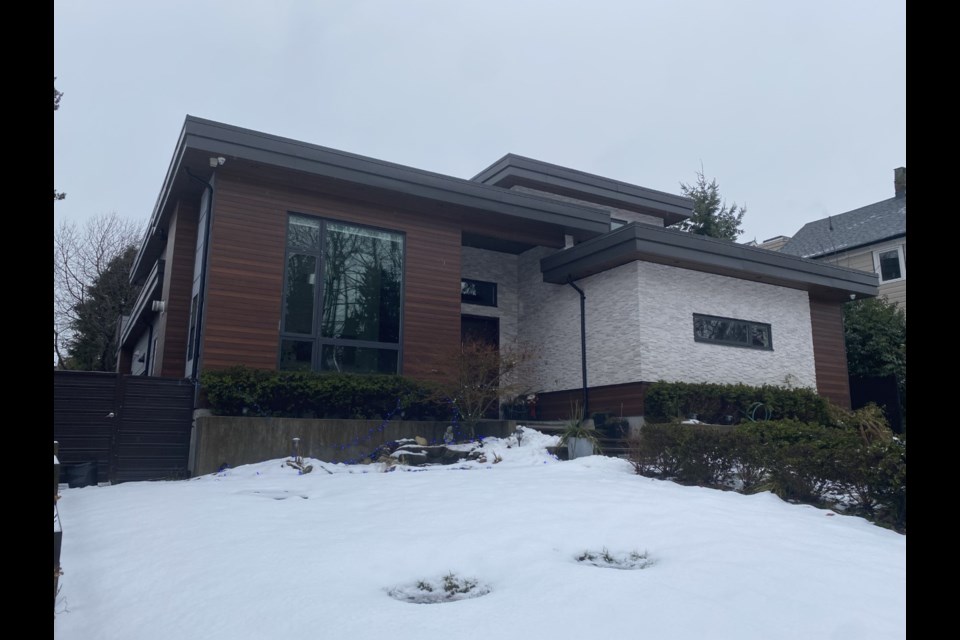A Queensborough property has topped the $3-million mark to become New Westminster’s highest assessed home.
BC Assessment is now sending out 2022 assessment notices to owners of more than a million properties throughout the Lower Mainland. The assessments, which reflect market value as of July 1, 2021, indicate the average assessment for single-family homes in New West increased by 24% in the past year.
According to BC Assessment, a home in New West with a typical assessed value of $1,119,000 on July 1, 2020 was assessed at $1,388,000 on July 1, 2021.
"British Columbia’s real estate market remains highly active, and that means most property owners can expect higher assessment values for 2022,” BC Assessment deputy assessor Bryan Murao said in a news release. "The widely reported heightened demand among homebuyers during the COVID-19 pandemic is reflected in the upward movement of property values across the province, including 10% to 30% increases throughout the Lower Mainland. City of Vancouver condos, however, are on the lower end of the changes, generally with single digit increases, whereas homes in the Fraser Valley suburbs are changing higher compared to most of Metro Vancouver."
A property at 1238 Ewen Ave. in Queensborough has been assessed at $3,009,000. The rest of this year’s Top 10 assessed properties in New West are: 124 Second St. – $2,889,000; 218 Regina St. – $2,875,000; 101 College Crt. – $2,869,000; 403 St. George St. – $2,867,000; 221 Queens Ave. – $2,794,000; 127 Queens Ave – $2,784,000; 1526 Hamilton St. – $2,783,000; 220 Second St. – $2,758,000; and 118 First St. – $2,757,000.
Aside from the Queensborough property and the West End home on Hamilton Street, all of the other Top 10 assessed homes are in the Queen’s Park neighbourhood.
“For residential strata properties in New West, the typical change from the 2021 to 2022 assessments was +9%,” Murao said in an email to the Record. “That includes both strata apartments as well as strata townhouses.”
Increased assessments, however, don’t necessarily mean property taxes will go up at the same rate.
“An increase in assessed value does not automatically mean an equal increase in property taxes,” Murao said. “The most important factor is not how much your assessed value has changed, but how your assessed value has changed relative to the average change for your property class in your city.”
Murao said the assessment authority has a section on its website to help the public understand that relationship more accurately. It can be found at www.info.bcassesssment.ca/propertytax.
And how do some potential tear-downs in New West fare in terms of their 2022 assessments?
In October 2021, council supported the demolition of a house at 509 11th St. because of numerous health and safety issues related to the outside and inside of the house. As of July 1, 2021, that property was assessed at $1,136,000, which was up from the $914,000 assessment a year earlier.
Not far away is a property at 817 St. Andrews St., which is home to a 1926 house being proposed for demolition as part of the site’s redevelopment. It was assessed at $1,193,000 in 2022, an increase from its $847,000 assessment in 2021.
What's happening elsewhere?
New Westminster’s Top 10 assessed properties don’t even come close to those in other parts of the Lower Mainland.
BC Assessment’s list of the Top 500 assessed properties ranges from a low of $11,844,000 for a home in the British Properties in West Vancouver (Number 500) to a high of $73,147,000 for a property on Point Grey Road in Vancouver’s Kitsilano neighbourhood.
And New Westminster’s average 24% increase in assessments for single-family homes is higher than some cities in the Lower Mainland, but lower than others.
This year’s figures from BC Assessment shows a range of increases in the Lower Mainland, from a low of 11% increase at the UBC Endowment Lands to a high of a 45% increase in Hope. A range of increases are also shown in some nearby communities including: Vancouver – 16%; Burnaby – 19%; Richmond – 21%; Coquitlam – 26%; Port Coquitlam – 31%; Delta – 33%; and Surrey – 34%.
BC Assessment’s Lower Mainland region includes all of Greater Vancouver, the Fraser Valley as well as the Sea to Sky area and the Sunshine Coast.




